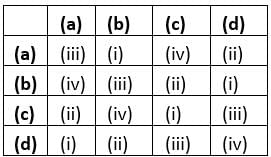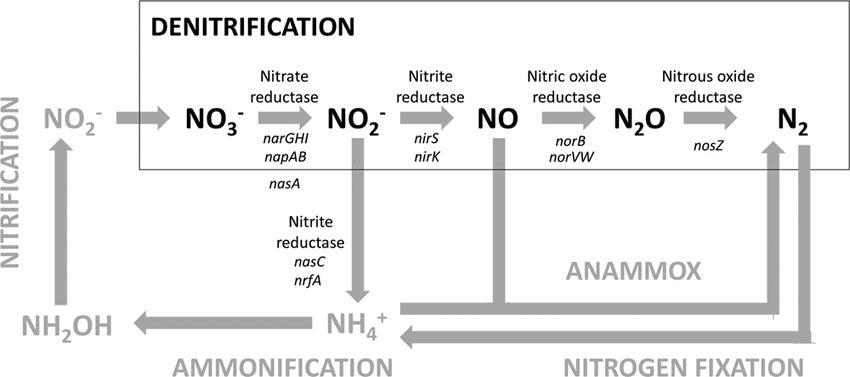31 Years NEET Previous Year Questions: Mineral Nutrition - 1 (Old NCERT) - NEET MCQ
30 Questions MCQ Test - 31 Years NEET Previous Year Questions: Mineral Nutrition - 1 (Old NCERT)
Match Column-I with Column- II. [2021]

Choose the correct answer from the options given below.



The product(s) of reaction catalyzed by nitrogenase in root nodules of leguminous plant is / are. [2020]
| 1 Crore+ students have signed up on EduRev. Have you? Download the App |
A thiobacillus is a group of bacteria helpful in carrying out [2019]
Which of the following elements is responsible for maintaining turgor in cells? [2018]
In which of the following all three are macronutrients? [2016]
Minerals known to be required in large amounts for plant growth include: [2015]
Deficiency symptoms of nitrogen and potassium are visible first in: [2014]
Which of the following elements is a constituent of biotin? [NEET Kar. 2013]
Which two distinct microbial processes are responsible for the release of fixed nitrogen as dinitrogen gas (N2) to the atmosphere? [NEET Kar. 2013]
The first stable product of fixation of atmospheric nitrogen in leguminous plants is : [NEET 2013] (a) (b) (c)
For its action, nitrogenase requires [2012M]
Read the following four statements (A-D).
(A) Both, photophosphorylation and oxidative phosphorylation involve the uphill transport of protons across the membrane.
(B) In dicot stems, a new cambium originates from cells of pericycle at the time of secondary growth.
(C) Stamens in flowers of Gloriosa and Petunia are polyandrous.
(D) Symbiotic nitrogen-fixers occur in the free-living state also in soil.
Q. How many of the above statements are correct? [2012M]
For its activity, carboxypeptidase requires [2012M]
Which one of the following is correctly matched ? [2012]
Best defined function of Manganese in green plants is : [2012]
Which one of the following is essential for photolysis of water ? [2011M]
Which one of the following is not an essential mineral element for plants while the remaining three are? [2011M]
The function of leg haemoglobin in the root nodules of legumes is : [2011]
Nitrifying bacteria : [2011]
Which one of the following elements in plants is not remobilised? [2011]
A prokaryotic autotrophic nitrogen fixing symboint is found in : [2011]
One of the free -living, anaerobic nitrogen - fixer is: [2010]
Which one of the following is not a micronutrient? [2010]
An element playing important role in nitrogen fixation is : [2010]
Which of the following is a symbiotic nitroger fixer?[2009]
Which one of the following pairs is wrongly matched? [2009]
Manganese is required in: [2009]
Nitrogen fixation in root nodules of Alnus is brought about by: [2008]
Which one of the following elements is not an essential micronutrient for plant growth? [2007]
Which one of the following is wrong statement


















